Time 19:30 Date 18 November 1987 Injuries 100 | Country United Kingdom Total number of deaths 31 | |
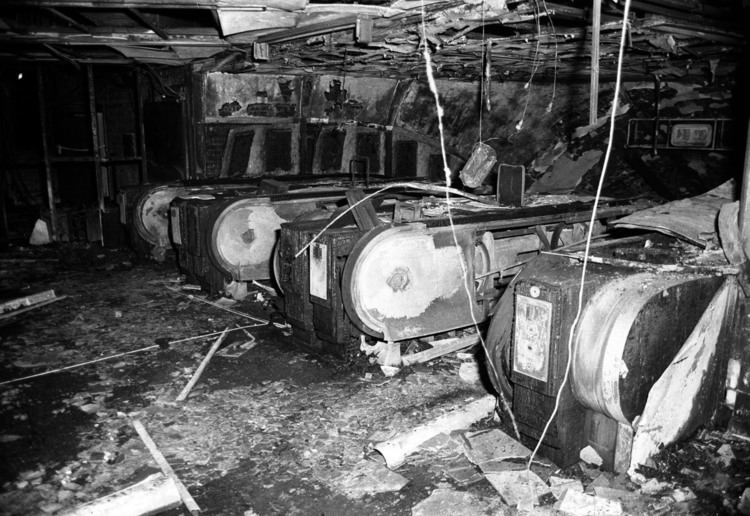 | ||
Location King's Cross St. Pancras tube station Similar Ladbroke Grove rail crash, Moorgate tube crash, Clapham Junction rail crash, Collapse of Hotel New World, Marchioness disaster | ||
On 18 November 1987, at approximately 19:30, a fire broke out at King's Cross St. Pancras tube station, a major interchange on the London Underground. As well as the mainline railway stations above ground and subsurface platforms for the Metropolitan lines, there were platforms deeper underground for the Northern, Piccadilly, and Victoria lines. The fire started on a wooden escalator serving the Piccadilly line and, at 19:45, erupted in a flashover into the underground ticket hall, killing 31 people and injuring 100.
Contents
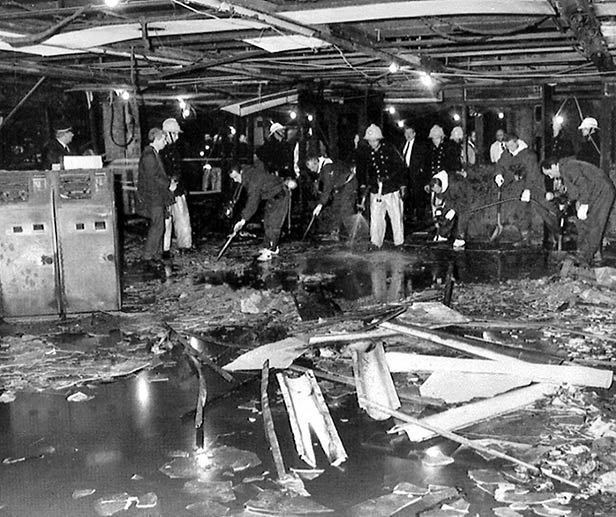
A public inquiry was conducted from February to June 1988. The investigators reproduced the fire twice, one to determine whether grease under the escalator was ignitable, and the other to determine whether a computer simulation of the fire—which would have determined the cause of the flashover—was accurate. The inquiry determined that the fire had started due to a lit match being dropped onto the escalator. The steps of the escalator heated and suddenly increased in intensity due to the previously unknown trench effect, discovered by the computer simulation. London Underground were strongly criticised for their attitude toward fires. Staff were complacent because there had never been a fatal fire on the Underground, and had been given little or no training to deal with fires or evacuation.
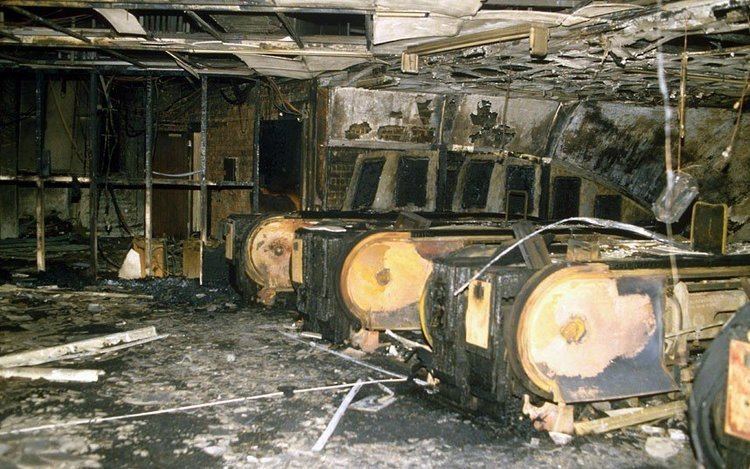
A report was published on the inquiry, leading to resignations of senior management in both London Underground and London Regional Transport and to the introduction of new fire safety regulations. Wooden escalators were gradually replaced with metal escalators on the London Underground
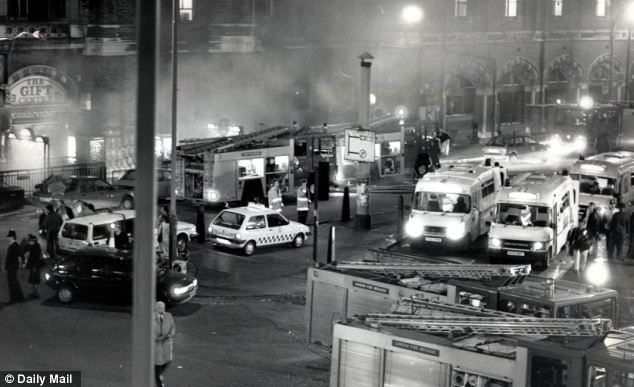
Fire
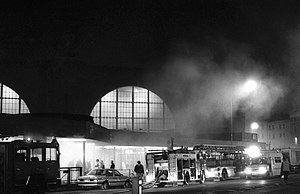
At King's Cross, as well as the mainline railway station above ground and subsurface platforms for the Metropolitan line, there are platforms deeper underground for the Northern, Piccadilly, and Victoria lines. There were two separate escalator shafts leading down to the Victoria and Piccadilly lines; the Northern line was reached from the Piccadilly line. Stairs connected the Piccadilly and Victoria line platforms and from these there was a subway to platforms used by British Rail Midland City (later Thameslink) trains to Moorgate and an entrance in Pentonville Road.
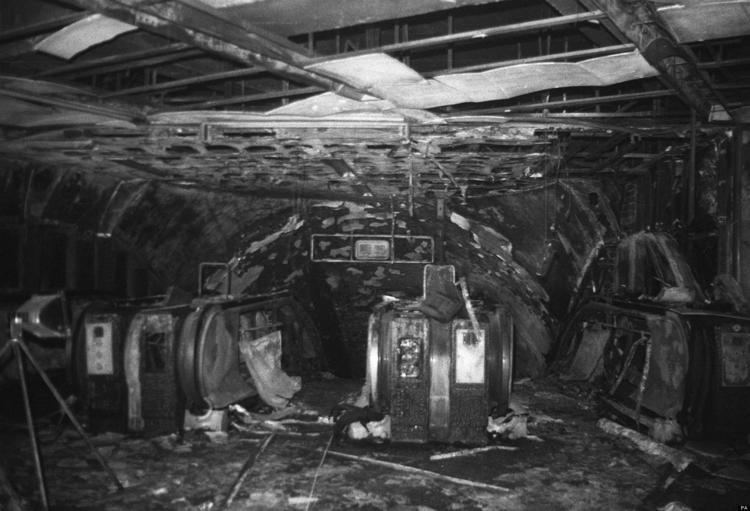
At about 19:30 several passengers reported seeing a fire on a Piccadilly line escalator. Staff and police went to investigate and on confirming the fire one of the policemen went to the surface to radio for the fire brigade. Four fire appliances and a turntable ladder were dispatched at 19:36 by the London Fire Brigade. The fire was beneath the escalator, impossible to get close enough to use a fire extinguisher. There was water fog equipment but staff had not been trained in its use. The decision to evacuate the station was made at 19:39, using the Victoria line escalators. A few minutes later the fire brigade arrived and several firemen went down to the escalator to assess the fire. They saw a fire about the size of a large cardboard box and planned to fight it with a water jet using men with breathing apparatus.
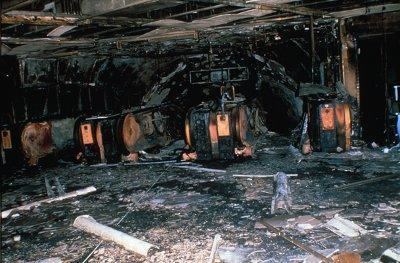
At 19:42 the entire escalator was aflame, producing superheated gas that rose to the top of the shaft enclosing the escalator, where it was trapped against the tunnels's ceiling, which was covered with about twenty layers of old paint. As the superheated gases pooled along the ceiling of the escalator shaft, all those old layers of paint began absorbing the warmth. The ceilings had been repainted several times in the past without removing the old paint. A few years before the fire, the Underground's director of operations had suggested that all this paint might pose a fire hazard. However painting protocols were not in his purview and his suggestion was widely ignored by his colleagues.
At 19:45 flashover occurred and a jet of flames came from the escalator shaft filling the ticket hall with intense heat and thick black smoke, killing or seriously injuring most of the people in the ticket hall. This trapped several hundred people below ground, who escaped on Victoria line trains. Several policemen with an injured man attempted to leave via the Midland City platforms, but found their way blocked by locked gates until these were unlocked by a cleaner. Staff and a policewoman trapped on a Metropolitan line platform were rescued by a train.
Thirty fire crews—over 150 firefighters—were deployed. Fourteen London Ambulance Service ambulances ferried the injured to local hospitals, including University College Hospital. The fire was declared out at 01:46 the following morning.
Thirty-one people died and 100 people were taken to hospital, 19 with serious injuries. Fire Brigade station officer Colin Townsley was in charge of the first pump fire engine to arrive at the scene and was down in the ticket hall at the time of the flashover. He did not survive, his body being found beside that of a badly burnt passenger at the base of the exit steps to Pancras Road. It is believed that Townsley spotted the passenger in difficulty and stopped to help her.
An initially unidentified man, commonly known as "Michael" or "Body 115" after its mortuary tag, was identified on 22 January 2004, when forensic evidence confirmed he was 73-year-old Alexander Fallon of Falkirk, Scotland. He was the subject of a 1990 Nick Lowe song, "Who Was That Man?".
Aftermath
The ticket hall and platforms for the Metropolitan line were undamaged and reopened the morning after the fire; the Victoria line, its escalators only slightly damaged, resumed normal operation on the following Tuesday. The ticket hall for the three tube lines was reopened in stages over a period of four weeks. The three escalators for the Piccadilly line had to be completely replaced, the new ones being commissioned on 27 February 1989, more than 16 months after the fire. Until that time, the only access to the Piccadilly line was via the Victoria line or Midland City platforms, and at peak hours was possible in one direction only.
Access to the Northern line platforms was indirect, its escalators connecting with the Piccadilly line. As the traffic from all three tube lines would have overcrowded the Victoria line escalators, Northern line trains skipped Kings Cross until repairs were complete. The nearly life-expired Northern line escalators were replaced as well and the Northern line station reopened, completing the return to normal operation, on 5 March 1989.
Investigation and report
A public inquiry into the incident was conducted by Desmond Fennell, OBE QC, assisted by a panel of four expert advisers. The inquiry opened at Central Hall, Westminster on 1 February 1988 and closed on 24 June, after hearing 91 days of evidence.
Smoking on Underground trains was banned in July 1984. Following a fire at Oxford Circus station in November 1984, the ban was extended to all underground stations in February 1985. However, smokers often ignored this and lit cigarettes on the escalators on their way out. The inquiry found the fire was most probably caused by a traveller discarding a burning match that fell down the side of the moving staircase on to the running track of the escalator. The possibility that the fire had been started deliberately was discounted by police, as there was no evidence that an accelerant had been used and access to the site of the fire was difficult. Investigators found charred wood in eight places on a section of skirting on an escalator and matches in the running track, showing that similar fires had started before but had burnt themselves out without spreading. The investigators found a build-up of grease under the tracks, which was believed to be difficult to ignite and slow to burn once it started, but it was noted that the grease was heavily impregnated with fibrous materials. A test was conducted where lit matches were dropped on the escalator to see if ignition would occur. Matches dropped did ignite the contaminated grease and the fire began spreading, being allowed to burn for nine minutes before being extinguished.
This test matched the initial eyewitness reports up to that point, but four expert witnesses could not agree as to how the small fire flashed over, with some concern that the paint used on the ceiling had contributed to the fire. A model of King's Cross station was built at the Atomic Energy Research Establishment, and using computer simulation software; this showed the flames lying down along the floor of the escalator rather than burning vertically before producing a jet of flame into the ticket hall. While the end result matched the eyewitness accounts of the tube fire, the simulation's depiction of the fire burning parallel to the 30° slope of the escalator was thought by some to be unlikely and it was suspected that the programming might be faulty. Experiments were conducted with a third scale replica of the escalator constructed at the UK's Health and Safety Executive site at Buxton. After seven and a half minutes of normal burning, the flames lay down as in the computer simulation. The metal sides of the escalator served to contain the flames and direct the temperature ahead of the fire. When the treads of the escalator flashed over, the size of the fire increased dramatically and a sustained jet of flame was discharged from the escalator tunnel into the model ticket hall. The 30° angle of the escalators was discovered to be crucial to the incident and the large number of casualties in the fire was an indirect consequence of a fluid flow phenomenon that was later named the trench effect, a phenomenon completely unknown prior to the fire. The conclusion was that this newly discovered trench effect had caused the fire to flashover at 19:45.
London Underground were strongly criticised in the report for their attitude to fires underground, underestimating the hazard because no one had died in a fire underground before. Staff were expected to send for the Fire Brigade only if the fire was out of control, dealing with it themselves if possible. Fires were called smouldering and staff had little or no training to deal with fires or evacuation.
Legacy
The publication of the report led to resignations of senior management of both London Underground and London Regional Transport. Wooden panelling was to be removed from escalators, heat detectors and sprinklers were to be fitted beneath escalators, and the radio communication system and station staff emergency training were to be improved.
The Fire Precautions (Sub-surface Railway Stations) Regulations 1989 were introduced. Smoking was banned in all London Underground stations, including on the escalators, on 23 November, five days after the fire. Wooden escalators were gradually replaced, some remaining into the early 2000s (Wanstead replacing theirs in 2003 and Marylebone in 2004) and as of 2014 the entire London Underground was operating on metal escalators, after the last wooden escalator at Greenford tube station was decommissioned on 10 March 2014.
Six firemen received Certificates of Commendation for their actions at the fire, including Station Officer Townsley who was given the award posthumously. Station Officer Townsley was also posthumously awarded the George Medal.
Soon after the fire a commemoration service was held at St Pancras Church. Further commemoration services were held on 18 November 1997, the tenth anniversary of the blaze, on the twentieth anniversary in 2007 at the station itself and on the twenty-fifth anniversary in 2012 at the Church of the Blessed Sacrament near the station.
Memorial plaques commemorating the disaster were installed at St Pancras Church, unveiled by the Princess of Wales, and at King's Cross station.
In popular culture
The fire has been depicted in four documentary series, Disaster "No Escape", The Day I Nearly Died "King's Cross - Beneath The Inferno", Forensic Files "Flashover", and Seconds from Disaster "Kings Cross Fire".
